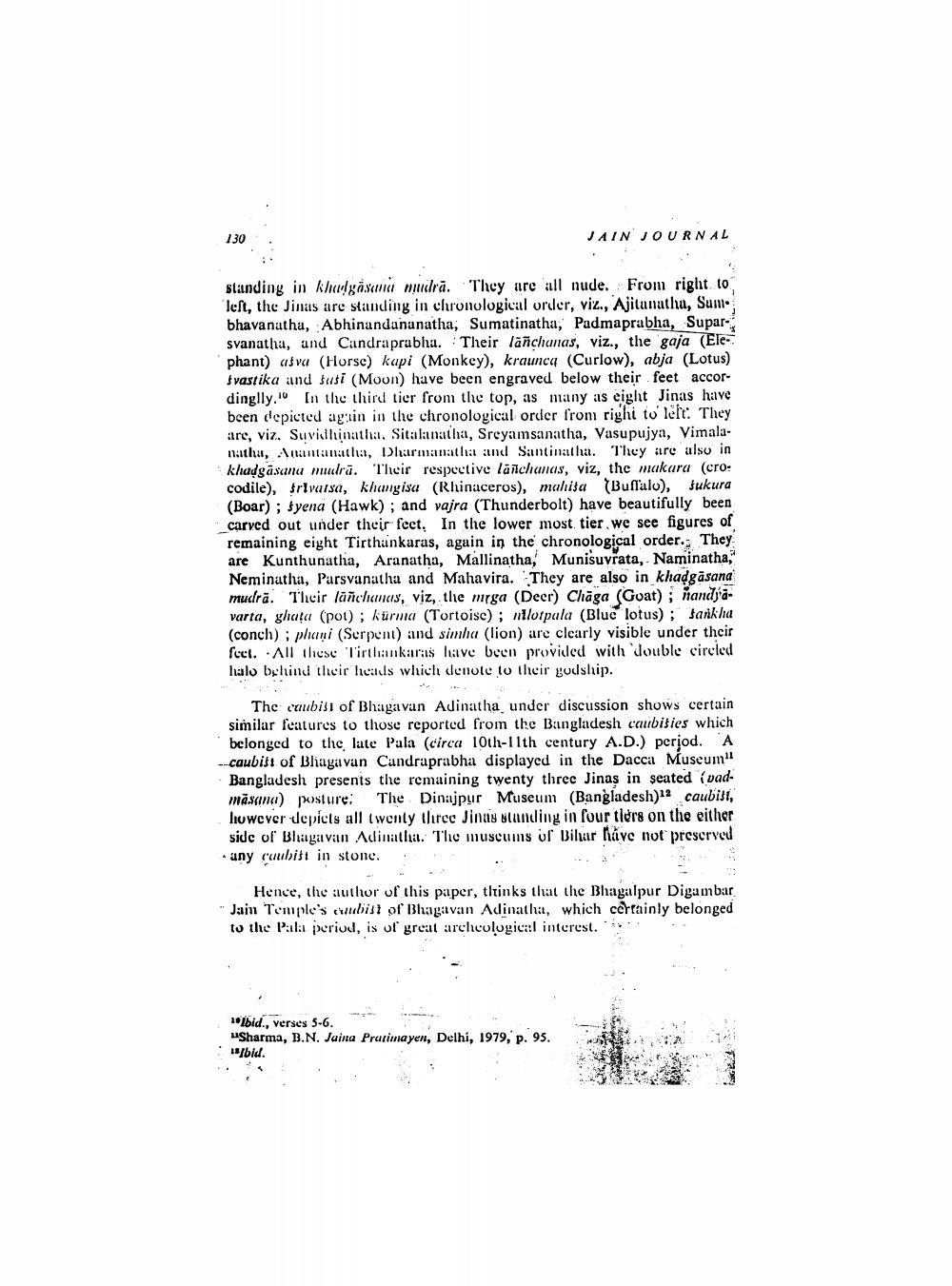Book Title: Some Unpublished Jaina Images Of Bihar Author(s): Ajoy Sinha Publisher: Ajoy Sinha View full book textPage 4
________________ 130 . JAIN JOURNAL standing in khugasami mwilra. They are all nude. From right to left, the Jinas are standing in chronological order, viz., Ajitunathu, Sum bhavanatha, Abhinandananatha, Sumatinatha, Padmaprabha, Suparsvanatha, and Candraprabha. Their lañchanas, viz., the gaja (Ele phant) afva (Horse) kapi (Monkey), kraunca (Curlow), abja (Lotus) $vastika and susi (Moon) have been engraved below their feet accordinglly. In the third tier from the top, as many as eight Jinas have been depicted again in the chronological order from righi to lelt: They are, viz. Suvidhinathil, Sitalanatha, Sreyamsanatha, Vasupujya, Vimalamutha, Amuntanatha, Dharmanatha and Santinathu. They are also in khadgasana murā. Their respective lanchanas, viz, the makara (cro: codile), srivaisa, khung isa (Rhinaceros), mahita (Buffalo), Sukura (Boar); $yena (Hawk); and vajra (Thunderbolt) have beautifully been carved out under their feet. In the lower most tier we see figures of remaining eight Tirthunkaras, again in the chronological order. They are Kunthunatha, Aranatha, Mallinatha, Munisuvrata, Naminatha, Neminatha, Parsvanatha and Mahavira. They are also in khadgasana mudra. Their lañchanics, viz,the mrga (Deer) Chaga (Goat); nandya. varta, yhata (pot); kürnia (Tortoise) ; nillotpala (Blue lotus); Sankha (conch); phani (Serpent) and simha (lion) are clearly visible under their fect. All these Tirthakaras lave been provided with double circled halo behind their heads which denote to their godship. The caubist of Bhagavan Adinatha under discussion shows certain similar features to those reported from the Bangladesh caubišies which belonged to the late Pala (circa 10th-11th century A.D.) period. A caubist of Bhagavan Candraprabha displayed in the Dacca Museum Bangladesh presents the remaining twenty three Jinas in seated (vadmāsaina) posture. The Dinajpur Museum (Bangladesh)12 caubisl, however depicts all twenty three Jinay standing in four tiers on the either side of Bhagavan Adinatha. The muscums of Dilur have not preserved any (uubist in stone. . Hence, the author of this paper, tlinks that the Bhagalpur Digambar * Jain Temple's wubist of Bhagavan Adinathat, which certainly belonged to the Paki period, is of great archeological interest. Ibid., verses 5-6. Sharma, B.N. Juina Pratimayen, Delhi, 1979, p. 95. 1*Ibid.Page Navigation
1 2 3 4 5 6 7 8
